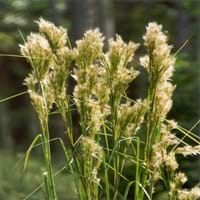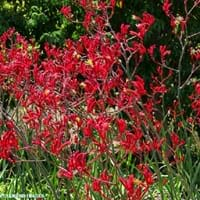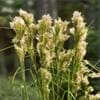Life Span
Perennial
Perennial
Origin
Caribbean, Central America
Australia
Types
Broomsedge Bluestem, Broomsedge
Not Available
Number of Varieties
Not Available
Habitat
ditches, Grassland, Moist Ditches, Moist Soils, Roadsides
Dry areas, Temperate Regions, Well Drained
USDA Hardiness Zone
5-9
Not Available
AHS Heat Zone
10 - 5
Not Available
Sunset Zone
H1, 3a, 3b, 4, 5, 6, 7, 8, 9, 14, 15, 16, 17, 18, 19, 20, 21, 22, 23, 24
Not Available
Habit
Upright/Erect
Clump-Forming
Minimum Height
Not Available
Minimum Width
Not Available
Flower Color
Cream, Green, White
Yellow, Red, Green, Purple, Orange
Flower Color Modifier
Bicolor
Not Available
Fruit Color
Not Available
Green, Brown
Leaf Color in Spring
Green, Blue Green
Green, Dark Green
Leaf Color in Summer
Light Green
Green, Dark Green
Leaf Color in Fall
Gray Green, Yellow green, Bronze
Green, Dark Green
Leaf Color in Winter
Gold, Tan, Bronze
Not Available
Leaf Shape
Grass like
Linear
Plant Season
Fall, Winter
Spring, Summer, Fall, Winter
Sunlight
Full Sun, Partial Sun
Full Sun, Partial Sun, Partial shade
Growth Rate
Medium
Medium
Type of Soil
Clay, Loam, Sand
Loam, Sand
The pH of Soil
Acidic, Neutral, Alkaline
Acidic, Neutral, Alkaline
Soil Drainage
Average
Not Available
Bloom Time
Late Summer, Early Fall, Fall, Late Fall, Early Winter
Indeterminate
Tolerances
Not Available
Drought
Where to Plant?
Ground
Container, Ground, Pot
How to Plant?
Root Division, Seedlings
Seedlings, Tissue culture
Plant Maintenance
Medium
Medium
Watering Requirements
Keep ground moist, Water Deeply
Average Water Needs
In Summer
Lots of watering
Lots of watering
In Spring
Moderate
Moderate
In Winter
Average Water
Average Water
Soil pH
Acidic, Neutral, Alkaline
Acidic, Neutral, Alkaline
Soil Type
Clay, Loam, Sand
Loam, Sand
Soil Drainage Capacity
Average
Not Available
Sun Exposure
Full Sun, Partial Sun
Full Sun, Partial Sun, Partial shade
Pruning
Cut or pinch the stems, Remove damaged leaves, Remove dead branches, Remove dead leaves
Remove damaged leaves, Remove dead branches, Remove dead leaves
Fertilizers
All-Purpose Liquid Fertilizer
All-Purpose Liquid Fertilizer
Pests and Diseases
Red blotch
fungus
Plant Tolerance
Drought
Drought
Flower Petal Number
Single
Single
Foliage Texture
Coarse
Medium
Foliage Sheen
Matte
Matte
Attracts
Birds, Butterflies
Birds, Hummingbirds
Allergy
Not Available
Eye irritation, Skin irritation
Aesthetic Uses
Ground Cover
Showy Purposes
Beauty Benefits
Not Available
Not Available
Environmental Uses
Air purification, Food for animals, Food for birds, Provides ground cover, Wildlife
Air purification
Medicinal Uses
Not Available
Not Available
Part of Plant Used
Seeds
Buds, Flowers
Other Uses
Used as Ornamental plant
Cut Flowers
Used As Indoor Plant
No
No
Used As Outdoor Plant
Yes
Yes
Garden Design
Container, Dried Flower/Everlasting, Feature Plant, Mixed Border, Rock Garden / Wall
Container, Cutflower, Feature Plant, Houseplant, Mixed Border, Tropical
Botanical Name
ANDROPOGON glomeratus
ANIGOZANTHOS
Common Name
Bushy Beardgrass, Bushy Bluestem, Bushy Broom Grass
Kangaroo Paws
In Hindi
Bushy Bluestem plant
Kangaroo Paws
In German
Bushy Bluestem Pflanze
Kangaroo Paws
In French
plante buissonnante Bluestem
Kangaroo Paws
In Spanish
planta arbustiva andropogon
Kangaroo Paws
In Greek
φυτό θαμνώδη BLUESTEM
Kangaroo Paws
In Portuguese
planta arbustiva Bluestem
Kangaroo Paws
In Polish
Krzaczaste Bluestem roślin
Kangaroo Paws
In Latin
Bushy bluestem herba
Kangaroo Paws
Phylum
Magnoliophyta
Not Available
Class
Liliopsida
Not Available
Order
Cyperales
Commelinales
Family
Poaceae
Haemodoraceae
Genus
Andropogon
Anigozanthos
Clade
Angiosperms, Commelinids, Monocots
Angiosperms, Commelinids, Monocots
Tribe
Andropogoneae
Not Available
Subfamily
Panicoideae
Conostyloideae
Season and Care of Bushy Bluestem and Kangaroo Paws
Season and care of Bushy Bluestem and Kangaroo Paws is important to know. While considering everything about Bushy Bluestem and Kangaroo Paws Care, growing season is an essential factor. Bushy Bluestem season is Fall and Winter and Kangaroo Paws season is Fall and Winter. The type of soil for Bushy Bluestem is Clay, Loam, Sand and for Kangaroo Paws is Loam, Sand while the PH of soil for Bushy Bluestem is Acidic, Neutral, Alkaline and for Kangaroo Paws is Acidic, Neutral, Alkaline.
Bushy Bluestem and Kangaroo Paws Physical Information
Bushy Bluestem and Kangaroo Paws physical information is very important for comparison. Bushy Bluestem height is 120.00 cm and width 75.00 cm whereas Kangaroo Paws height is Not Available and width Not Available. The color specification of Bushy Bluestem and Kangaroo Paws are as follows:
Bushy Bluestem flower color: Cream, Green and White
Bushy Bluestem leaf color: Green and Blue Green
Kangaroo Paws flower color: Yellow, Red, Green, Purple and Orange
- Kangaroo Paws leaf color: Green and Dark Green
Care of Bushy Bluestem and Kangaroo Paws
Care of Bushy Bluestem and Kangaroo Paws include pruning, fertilizers, watering etc. Bushy Bluestem pruning is done Cut or pinch the stems, Remove damaged leaves, Remove dead branches and Remove dead leaves and Kangaroo Paws pruning is done Remove damaged leaves, Remove dead branches and Remove dead leaves. In summer Bushy Bluestem needs Lots of watering and in winter, it needs Average Water. Whereas, in summer Kangaroo Paws needs Lots of watering and in winter, it needs Average Water.





